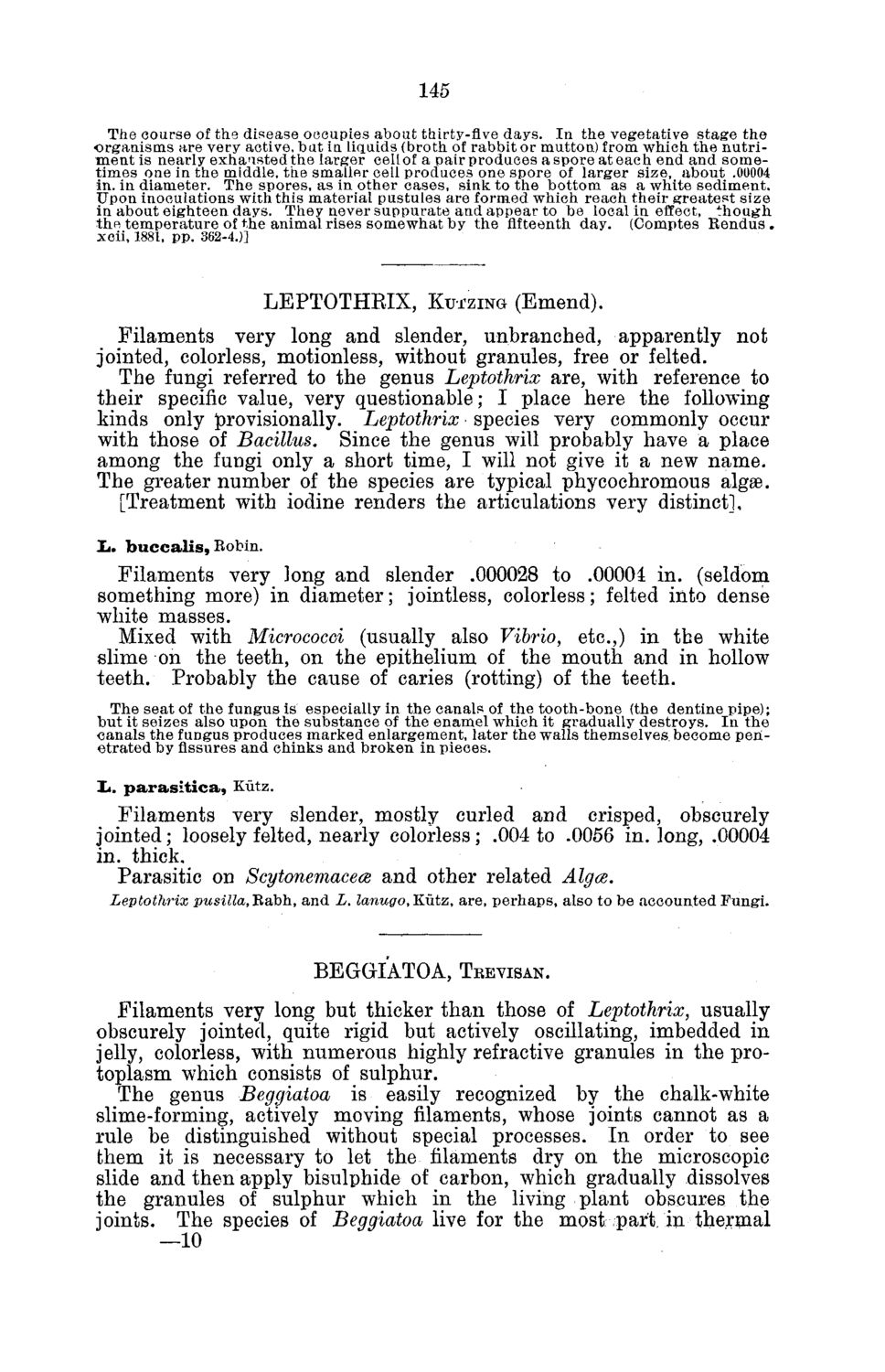| |
| |
Caption: Board of Trustees Minutes - 1882
This is a reduced-resolution page image for fast online browsing.

EXTRACTED TEXT FROM PAGE:
145 The course of the disease occupies about thirty-five days. In the vegetative stage the organisms are very active, bat in liquids (broth of rabbit or mutton) from which the nutriment is nearly exhausted the larger cell of a pair produces a spore at each end and sometimes one in the middle, the smaller cell produces one spore of larger size, about .00004 in. in diameter. The spores, as in other cases, sink to the bottom as a white sediment. Upon inoculations with this material pustules are formed which reach their greatest size in about eighteen days. They never suppurate and appear to be local in effect, though the temperature of the animal rises somewhat by the fifteenth day. (Comptes Kendus , xcii, 1881, pp. 362-4.)] LEPTOTHEIX, KUTZING (Emend). Filaments very long and slender, unbranched, apparently not jointed, colorless, motionless, without granules, free or felted. The fungi referred to the genus Leptothrix are, with reference to their specific value, very questionable; I place here the following kinds only provisionally. Leptothrix species very commonly occur with those of Bacillus. Since the genus will probably have a place among the fungi only a short time, I will not give it a new name. The greater number of the species are typical phycochromous algae. [Treatment with iodine renders the articulations very distinct], Xu b u c c a l i s , Robin. Filaments very long and slender .000028 to .00004 in. (seldom something more) in diameter; jointless, colorless; felted into dense "white masses. Mixed with Micrococci (usually also Vibrio, etc.,) in the white slime on the teeth, on the epithelium of the mouth and in hollow teeth. Probably the cause of caries (rotting) of the teeth. The seat of the fungus is especially in the canals of the tooth-bone (the dentine pipe); but it seizes also upon the substance of the enamel which it gradually destroys. In the canals the fungus produces marked enlargement, later the walls themselves, become penetrated by fissures and chinks and broken in pieces. IJ. p a r a s i t i c a , Kutz. Filaments very slender, mostly curled and crisped, obscurely jointed; loosely felted, nearly colorless; .004 to .0056 in. long, .00004 in. thick. Parasitic on Scytonemacece and other related Algce. Leptothrix pusilla^sibh, and L. lanugo, Kutz, are, perhaps, also to be accounted Fungi. BEGGIATOA, TKEVISAN. Filaments very long but thicker than those of Leptothrix, usually obscurely jointed, quite rigid but actively oscillating, imbedded in jelly, colorless, with numerous highly refractive granules in the protoplasm which consists of sulphur. The genus Beggiatoa is easily recognized by the chalk-white slime-forming, actively moving filaments, whose joints cannot as a rule be distinguished without special processes. In order to see them it is necessary to let the filaments dry on the microscopic slide and then apply bisulphide of carbon, which gradually dissolves the granules of sulphur which in the living plant obscures the joints. The species of Beggiatoa live for the most part, in thermal —10
| |